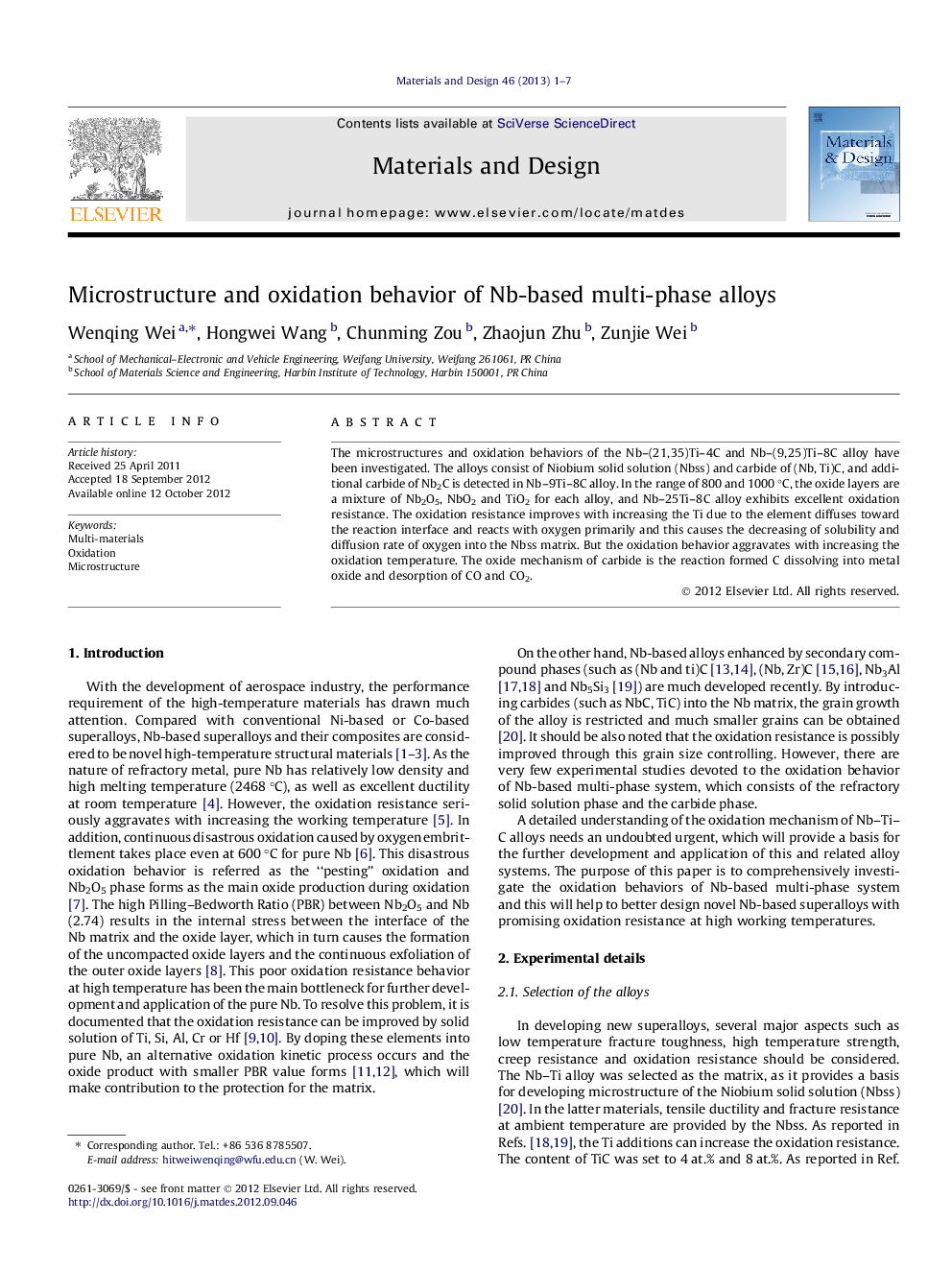| Article ID | Journal | Published Year | Pages | File Type |
|---|---|---|---|---|
| 830115 | Materials & Design (1980-2015) | 2013 | 7 Pages |
The microstructures and oxidation behaviors of the Nb–(21, 35)Ti–4C and Nb–(9, 25)Ti–8C alloy have been investigated. The alloys consist of Niobium solid solution (Nbss) and carbide of (Nb, Ti)C, and additional carbide of Nb2C is detected in Nb–9Ti–8C alloy. In the range of 800 and 1000 °C, the oxide layers are a mixture of Nb2O5, NbO2 and TiO2 for each alloy, and Nb–25Ti–8C alloy exhibits excellent oxidation resistance. The oxidation resistance improves with increasing the Ti due to the element diffuses toward the reaction interface and reacts with oxygen primarily and this causes the decreasing of solubility and diffusion rate of oxygen into the Nbss matrix. But the oxidation behavior aggravates with increasing the oxidation temperature. The oxide mechanism of carbide is the reaction formed C dissolving into metal oxide and desorption of CO and CO2.
► The grain refinement can be achieved through introducing TiC particles. ► The addition of Ti can ameliorate the mixture of the oxide layer. ► The oxidation resistance is improved by doping Ti element and grain refinement. ► The oxidation mechanism of Ti and C is summarized.
